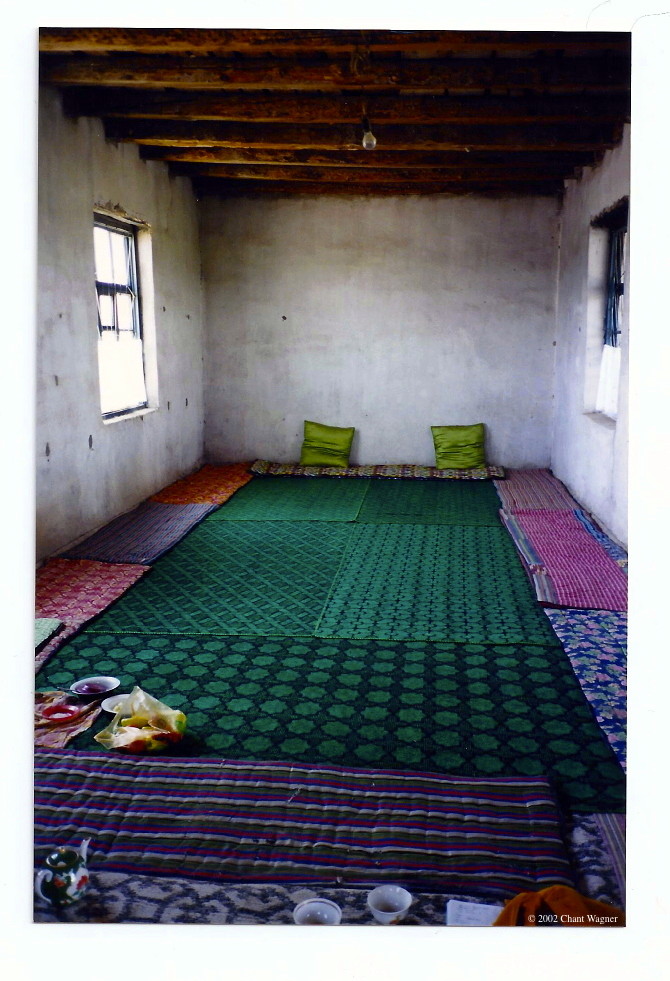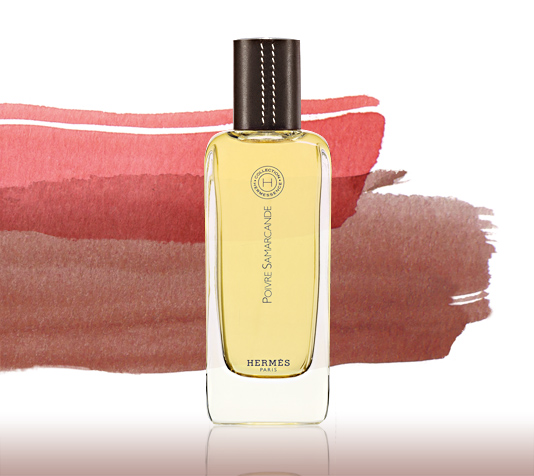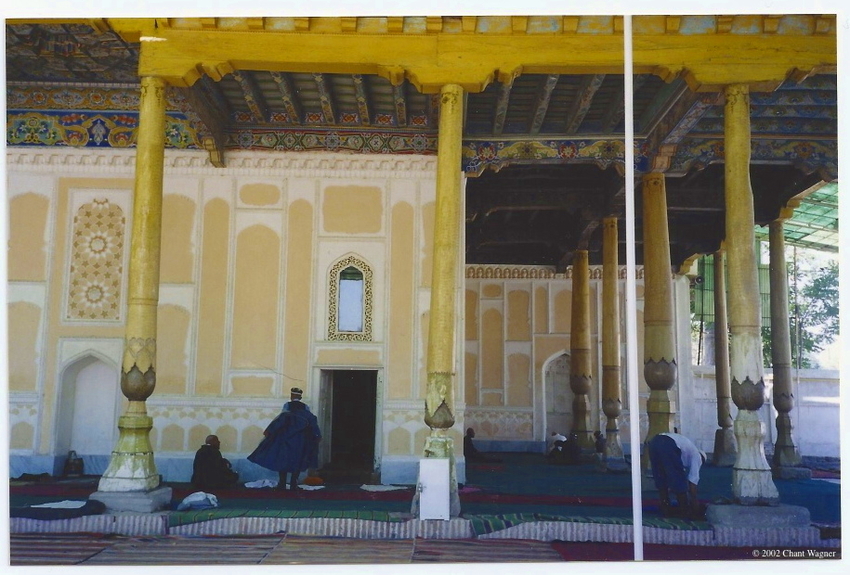Hermès Poivre Samarcande (2004): The Scent of Day-Dreaming {Perfume Review & Musings}

The Room to Welcome Guests Inside a Uzbek house, Samarkand region © 2002 Chant Wagner
A Review of Hermès Poivre Samarcande by Chantal-Hélène "Chant" Wagner
Poivre Samarcande by Hermès in the Hermessence series opens on a cuminey and cedarey impression making you think of splintered wood soon seguing into a spicy and woody skin scent - there is a hint of leather. For those who know Jean-Claude Ellena's work, they will have recognized his instinctive attraction to the scent of cumin which signifies for him sensuality. The illusion cumin gives off as mimicking the scent of human transpiration is like one of those Mandragore plant roots which offer confusing human shapes. He's expressed in the past his admiration for his mentor, perfumer Edmond Roudnitska, and his love in particular for the cumin note in the latter's work Diorella worn by Ellena's wife.
But what of pepper and what of Samarkand?...
Creative pathways can be quite circuitous. You start somewhere and you end up somewhere else. According to Ellena, and to simplify, Poivre Samarcande is inspired by a felled oak tree in the perfumer's garden whose peppery smell led him to name it after the fabled Central Asian city, to pay homage to the legendary stop through which caravans transporting spices costlier than gold would travel. He explained,
"A massive, beautiful oak tree once grew in front of my house, blocking our view of the Mediterranean. Eventually, it grew ill and was felled. The peppery, musky, slightly smoky scent of the cut wood etched itself in my memory. The soul of the old oak, mixed with pepper, lives on in this fragrance. The name Samarcande is an homage to the city through which spice caravans once passed on their way from East to West."
In other words, the spicy scent of a dead Mediterranean oak tree invites your mind to travel to a far distant place and era. More mystically, we are called to reflect on the notion that the soul of that now defunct tree is contained in a bottle of perfume.
As it happens, I read the above after having reviewed the perfume in French in my notes, which I will now translate.
Preparing for the Prayer in a Mosque in Samarkand, Uzbekistan © 2002 Chant Wagner
How it Smells Like
An extremely alluring and even devastating smell of warm, sweaty and sensual spices takes lift above the composition. One smells a mix of spices but also a bit of green, young wood. Soon, the woody tonality glides with more certainty towards the image of a vast plain filled with tall, green grasses teased by the wind. Then, precious and mysterious woods once more mingle, adding their accents to a rub of powdery spices offering the metallic facet of clove, as well as the note of human perspiration of cumin.
Like many works thought out by Jean-Claude Ellena, the perfume reveals an economy of means and well-circumscribed effects. To the evocative motifs, there is a tendency to see succeed an olfactory imprint bespeaking most expressively of skin and intimate murmurs. Where you perhaps expected a Gengiskhanid epic, a historical breeze transporting the scent of pepper conjuring up the great expanses or the spice roads of Central Asia, one returns towards a much more intimate story.

Your skin smells wonderfully good as if you were the beneficiary of a beauty ritual perfuming you with fragments of woods and spices macerated in cream. The composition reportedly contains 71% of Iso E Super which is like an olfactory, beautifying makeup for the skin. The fragrance reveals at this stage a creamy facet, like a blanc-manger of flowers and exotic condiments. The vetiver and sandalwood in it are incredibly creamy. I wonder if ylang-ylang participates to this effect. You feel like eating the concoction.
I who have gone to Samarkand - and if one wanted at all cost to find a real-world reference to this composition, I would say that it evokes for me from amongst my mental imagery of the mythical city, the columns in sculpted wood which decorate the houses and palaces of the Timurid city (see 2nd picture above).
A hint of smoke seems to rise now seemingly born from the flint stone of the carnation flower. This at once floral and metallic smell seems to have become a silex to better spark a fire. I think I can even perceive a umami smell - basil leaf perhaps which by association smells of meat - and therefore here, one of smoked meat. That would be in the order of things and olfactory sensations to be experimented in Samarkand.
The scent of the oak here is floral enough to create the sensation of an unknown flower.
Poivre Samarcande is an oak-y opus, but most of all it is pure abstraction and wanderings of the mind. It is neither here nor there. It is the scent of day-dreaming - and land-locked Samarkand is its rêverie, no longer terrible but powerful enough still to infiltrate the imaginings of a French perfumer living in a distant land as he looks over the remains of a ancient oak and to the Mediterranean sea beyond.










